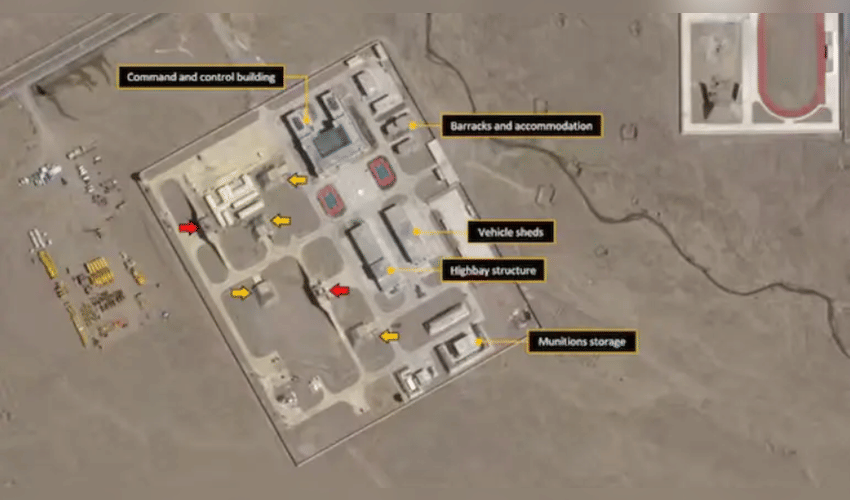Military
New Chinese Missile Base Emerges Close to India's Eastern Frontier

China has recently initiated the construction of a significant new air defense installation near its border with India, specifically on the eastern banks of Pangong Lake in Tibet. This development, revealed by high-resolution satellite imagery, underscores China's ongoing efforts to strengthen its military posture along the sensitive Line of Actual Control (LAC) with India. The site is situated approximately 110 kilometers from the location of the 2020 Galwan Valley clash, a flashpoint between the two countries.
The emerging complex features multiple strategic elements including command and control centers, barracks, vehicle shelters, ammunition storage facilities, and radar installations. Notably, the installation includes covered missile launch sites equipped with retractable sliding roofs designed to house Transporter Erector Launcher (TEL) vehicles. These protected positions are intended to conceal and shelter China's advanced HQ-9 long-range surface-to-air missile systems, enhancing both the survivability and operational readiness of the air defense assets. The retractable roofs enable missile launches while shielding the launchers from surveillance and potential air strikes.
This facility is not an isolated case but follows similar military infrastructure developments by China in other border areas such as Gar County, near India's upgraded Nyoma airfield, roughly 65 kilometers from the LAC. The integration of these installations into a wired data network likely links missile systems with command hubs for coordinated defense operations, reflecting a state-of-the-art, networked air defense strategy.
China's approach to military buildup in Ladakh exhibits a focus on hardened, concealed missile sites that mirror deployments in the South China Sea, emphasizing tactical surprise, protection, and deterrence capabilities. This signals China's intent to consolidate territorial control and strengthen its air defense posture amid continuing border tensions with India.
From a broader perspective, this development highlights the enduring strategic competition in the Himalayan border region where both nations continue to enhance their military capabilities. For India, it underscores the urgency to maintain and upgrade its own air defense and surveillance assets in the region to counterbalance China's growing military footprint. This new air defense installation near Pangong Lake is a clear indication of China's methodical and technologically sophisticated efforts to fortify its frontier presence along disputed borders, posing both challenges and strategic imperatives for India in the evolving regional security landscape.



